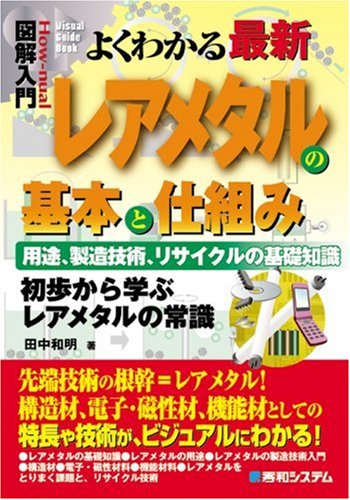8 0 0 0 OA 走査電子顕微鏡を用いた新しいプランクトン調査法
- 著者
- 名取 則明 桑田 正彦 田中 和明 戸田 龍樹
- 出版者
- 日本プランクトン学会
- 雑誌
- 日本プランクトン学会報 (ISSN:03878961)
- 巻号頁・発行日
- vol.70, no.1, pp.1-9, 2023-02-25 (Released:2023-03-22)
- 参考文献数
- 7
The water freeze-drying method can be used to prepare samples for scanning electron microscopy (SEM) in which samples immersed in water are frozen and dried under vacuum. This method does not require chemical fixation of freshwater microorganisms, whose structures are easily disrupted during fixations, and mixed samples of different species can be processed simultaneously with minimal morphological damage. We optimised this method for plankton surveys using SEM. A membrane filter with a plastic frame was attached to the filtration device, and microorganisms in the collected water were filtered and concentrated. Immediately before the end of filtration, the framed filter was removed from the filtration device, whereas the concentrated microorganisms remained covered with water. The wet filter was frozen by contact with a cooled metal plate and vacuum-dried. After conductive coating of the filter, the microorganisms on the filter were identified and counted using SEM. This method is more time-consuming compared to conventional optical microscopy (OM) methods and provides no information on colours or internal structures, making species identification difficult. However, the number of microorganisms detected was two- to three-fold lager than that detected using OM, including some species that could not be detected using OM. This result can be explained as follows: there was almost no loss of microorganisms larger than the filter pore size, and the resolution of SEM is higher than that of OM. A further advantage of this method is that the measured samples can be stored for long periods without morphological damage, and the measurement results can be re-validated at a later date.
1 0 0 0 OA 桂川 (山梨県) の底生生物と水質汚濁 (第2報)
- 著者
- 橋本 徳蔵 田中 和明
- 出版者
- Japanese Society of Water Treatment Biology
- 雑誌
- 日本水処理生物学会誌 (ISSN:09106758)
- 巻号頁・発行日
- vol.15, no.1, pp.19-34, 1979-09-01 (Released:2010-02-26)
- 参考文献数
- 14
相模川上流域 (桂川) において, 本流4地点, 支流等9地点の汚水生物学的水質調査を1973年6月に実施したが, 水質判定の結果は, 次のとおりである。付着藻類 底生動物桂川・鐘山橋 βms os桂川・院辺橋 βms os桂川・強瀬橋 βms βms~os桂川・川合橋 βms~os os忍野八海・湧池 βms~os 測定せず宮川・鴻ケ池 αms αms鹿留川・大沢橋 βms~os os柄杓流川・中央高速道下 βms~os os大幡川・流末 βms os朝日川・落合橋 βms~αms αms笹子川・大月インター上 βms os葛野川・流末 βms os鶴川・厳島橋 βms os(―はこれに近いことを示す)
1 0 0 0 小笠原諸島の樹木類等より分離された菌類
- 著者
- 佐藤 豊三 小野 剛 田中 和明 服部 力
- 出版者
- 日本微生物資源学会
- 雑誌
- 日本微生物資源学会誌 = Microbial resources and systematics (ISSN:13424041)
- 巻号頁・発行日
- vol.32, no.2, pp.163-178, 2016-12
2011~2014年,小笠原諸島において採集した約300点の樹木等の罹病部や寄生生物から菌類を分離し,DNAバーコード塩基配列および形態により分類同定を行った結果,286菌株が124種に同定され161菌株が属まで同定された。これらのうち少なくとも37種は日本新産,20種・1亜種は小笠原新産であり,57菌種について延べ80種の新宿主が明らかとなった。新宿主には19種の小笠原諸島の固有種が含まれていた。一方,固有植物から分離された他の50菌株以上が37属に同定されたが,DNAバーコードを用いたBLAST検索などの結果では種まで特定できなかった。これらは新種の可能性も含めて分類学的所属を明らかにする必要がある。また,国内初確認13種および小笠原諸島新産菌1種は,熱帯・亜熱帯産の宿主から分離され,菌自体も熱帯・亜熱帯分布種であった。以上および既報から,小笠原諸島の菌類相には熱帯・亜熱帯要素が含まれていることが改めて認められた。
- 著者
- 林 邦忠 小田原 清史 笹崎 晋史 山本 義雄 並河 鷹夫 田中 和明 DORJI Tashi TSHERING Gyen 向井 文雄 万年 英之
- 出版者
- 日本動物遺伝育種学会
- 雑誌
- 動物遺伝育種研究 = The journal of animal genetics (ISSN:13449265)
- 巻号頁・発行日
- vol.35, no.1, pp.5-10, 2007-06-01
- 参考文献数
- 21
- 被引用文献数
- 3
In order to investigate the genetic diversity of the Bhutanese cattle, complete mitochondrial DNA displacement loop sequences from 30 Bhutanese cattle were determined and analyzed these in conjunction with previously published sequences. Sequence comparisons and phylogenetic analyses revealed the presence of <I>B.taurus</I> mitochondrial DNA haplotypes (13.3%), suggesting the genetic introgression of <I>B.taurus</I> genetic materials into Bhutanese population. The remaining <I>B.indicus</I> haplotypes indicated two clades of mitochondrial haplogroups, I1 and I2. The high frequency of I2 haplotype (46.2 %) was observed in Bhutanese cattle. Mean nucleotide divergence values were calculated within populations and Bhutanese population revealed higher value (0.75 %) than those of India (0.41 %) and China (0.19 %) . The results suggested the high genetic variability in Bhutanese cattle consisting of several haplogroups of mitochondrial DNA.
1 0 0 0 ISO IRDSのCACEへの適用に関する一考案
1 0 0 0 OA エタノール : 発酵法と合成法(社会の土台を作る基礎化学製品 13)
- 著者
- 安戸 饒 田中 和明
- 出版者
- 公益社団法人 日本化学会
- 雑誌
- 化学と教育 (ISSN:03862151)
- 巻号頁・発行日
- vol.47, no.8, pp.552-556, 1999-08-20 (Released:2017-07-11)
- 参考文献数
- 2
日本の工業用アルコールの原料は澱粉質から始まり, 糖蜜と変遷し, 最近では生産コスト低減と廃液処理の問題から原料転換が種々実施されている。最近の原料別生産量は輸入粗留アルコール58%, 合成法39%, その他国内発酵製品3%である。発酵法については世界的に農産物がまだ主原料である。ここでは生産性を改良するための種々の発酵法について紹介する。合成エタノールについては, 技術的に確立しているエチレンの直接水和法について紹介する。
1 0 0 0 OA 組み込み向けRubyの開発と実装に関する研究: RiteVMの実装と検証について
- 著者
- 森脇 淑也 田中 和明
- 出版者
- 電気・情報関係学会九州支部連合大会委員会
- 雑誌
- 電気関係学会九州支部連合大会講演論文集 平成24年度電気関係学会九州支部連合大会(第65回連合大会)講演論文集
- 巻号頁・発行日
- pp.403, 2012-09-14 (Released:2014-12-17)
Rubyは、他のプログラミング言語と比較して、動的型付け(データ型の指定や宣言が不要)や豊富なライブラリなどの特徴があり、動作の本質的な部分に不必要なコードを書く必要がほとんどないためプログラムが理解やすく、効率的に書くことができるプログラミング言語である。しかし、メモリ使用量が多いため、既存のRubyでは組み込みシステム開発に用いることができない。そこで、開発中の組み込みシステム向けRuby(軽量Ruby)を用いることで開発効率を上げることを目的とする。現在は、軽量RubyをFPGAというPC上で回路の書き換えが可能なLSI上で動作させることで、開発効率の向上についての検証を行っている。
- 著者
- 佐藤 祥爾 田中 和明 安部 憲広
- 出版者
- 一般社団法人電子情報通信学会
- 雑誌
- 電子情報通信学会技術研究報告. RECONF, リコンフィギャラブルシステム (ISSN:09135685)
- 巻号頁・発行日
- vol.106, no.393, pp.27-29, 2006-11-22
ロボットの制御を目的として,画像処理による環境認識や障害物回避などの手法が提案されている.このような制御で必要なのは,画像データそのものではなく,画像に対して何らかの処理を行った結果である.この結果を得るために,画像処理をハードウェアで行い,必要とする処理結果のみを得ることのできるハードウェアを設計している.カメラの画像に対して,リアルタイムに目的とする画像処理を行い,画像処理の結果を得る.適用する環境や目的によって,画像処理の内容が異なるため,画像処理の柔軟性を保証するためにFPGAを使った.
1 0 0 0 DCTを用いた画像符号化における量子化テーブルの自動生成
近年の計算機処理能力・画像表示能力・通信技術の向上により、さまざまな分野で、さまざまな画像データが計算機上で取り扱われている。しかしながら、質の高い画像を表現するために多くのデータ量を必要とし、これらを取り扱う技術が要求される。このような要求から、大容量の画像の蓄積・伝送を効率的に実現するための画像の符号化、つまり画像データの圧縮についての研究が行わてれいる。画像は多くの冗長を含むことが知られている。このことは、画像の伝送・蓄積を、その冗長を取り除くことによってより少ない資源で実現することが可能であることを意味している。本研究では、このような画像の冗長に着目してDCTを用いた画像符号化を行い、視覚的に劣化を口だたせないような量子化を行う。この量子化を決定するものが量子化テーブルである。ここでは、画像全体にわたって劣化が均一になるような量子化テーブルを自動生成し、画像符号化を行うアルゴリズムについて提案を行う。
